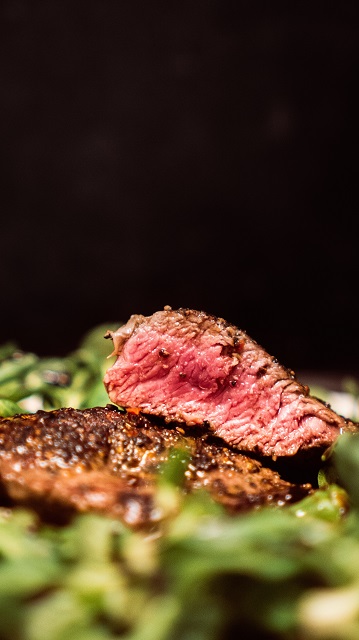Posted: Jul 03, 2020

The dated macho attitude that used to be the rule in old-line New York steakhouses like Palm, Smith & Wollensky and Peter Luger where the maître d’ said things like, “You got a seven o’clock reservation? So do a lot of people. Wait at the bar,” and the waiters barely mumbled, “How d’ya want ya steak cooked?” was, thank heavens, superseded over the last decade by a welcoming, cordial hospitality that seemed to begin about the time Wolfgang’s Steakhouse opened near Grand Central Terminal. Wolfgang Zwiener, who’d spent decades as a Luger’s waiter, was determined to serve food every bit as good as any in New York but to eliminate the rudeness and focus in on good service. And he had the good sense to hire a large number of already experienced waitstaff from Eastern European—Albanian, Slovenian, Croatian, Montenegrin—whose demeanor was a far cry from the old “sit-‘em’-and-’serve–‘em” routine.
Indeed, since so many of the steakhouses in the city are now owned by these former waiters and serve the same very high quality beef, seafood and wine, they have won their followings by bending over backwards to make their regulars and newcomers happy. Case in point, Tuscany Steakhouse, whose owner, Albanian-born Steve Haxhiaj, had been g-m at Wolfgang’s and a former owner of Il Monello, along with chef Jaime Chabla, a native of Ecuador, also a Wolfgang’s alumnus. The four-year-old restaurant is well-situated in midtown, near the Theater District, Carnegie Hall and Lincoln Center. Having survived the pandemic, Tuscany Steakhouse is back in its old form and so are their regulars.
The main dining area has white-washed brick with Roman arches trimmed in oak, with extremely comfortable black leather chairs, thick white tablecloths and a mirrored wall. When I visited, the room was very dimly lighted—highly unusual for a steakhouse—but they kindly turned up the ceilings lights a bit when asked, which made for a far more convivial atmosphere
The menu has the sacrosanct form followed all over the city, with as much emphasis on appetizers, soups, seafood and side dishes as meat. Aside from a couple of pastas, there isn’t anything particularly Tuscan about the menu, but a special one night of zucchini flowers stuffed with ricotta ($15) was a very welcome addition. Otherwise the appetizers were are of excellent quality, including a jumbo shrimp cocktail ($25.95), with an emphasis on jumbo. Baked clams oreganata ($20.95) retained the crab flavor amidst the subtle seasonings, and fried calamari ($24.95) showed the same way. You begin with a generous basket of brads and a good plate of butter.
By John Mariani
Source: forbes.com
July 2, 2021
Go-Wine's mission is to organize food and beverage information and make it universally accessible and beneficial. These are the benefits of sharing your article in Go-Wine.com


The Wine Thief Bistro & Specialty Wines is a locally owned small business in downtown Frankfort, IL offering world class wines in a relaxed, casual gathering spot for friends and family. Offering world class virtual tastings and touchless carryout.
https://www.twtwineclub.com/aboutus
Go-Wine 25 Great Wineries in US selection prioritizes quality, value and availability.
www.go-wine.com/great-wineries-in-america
Tasting wine is a nice experience, but visiting the places in which wine is made is a magic moment. Available in New York City for touchless pickup.